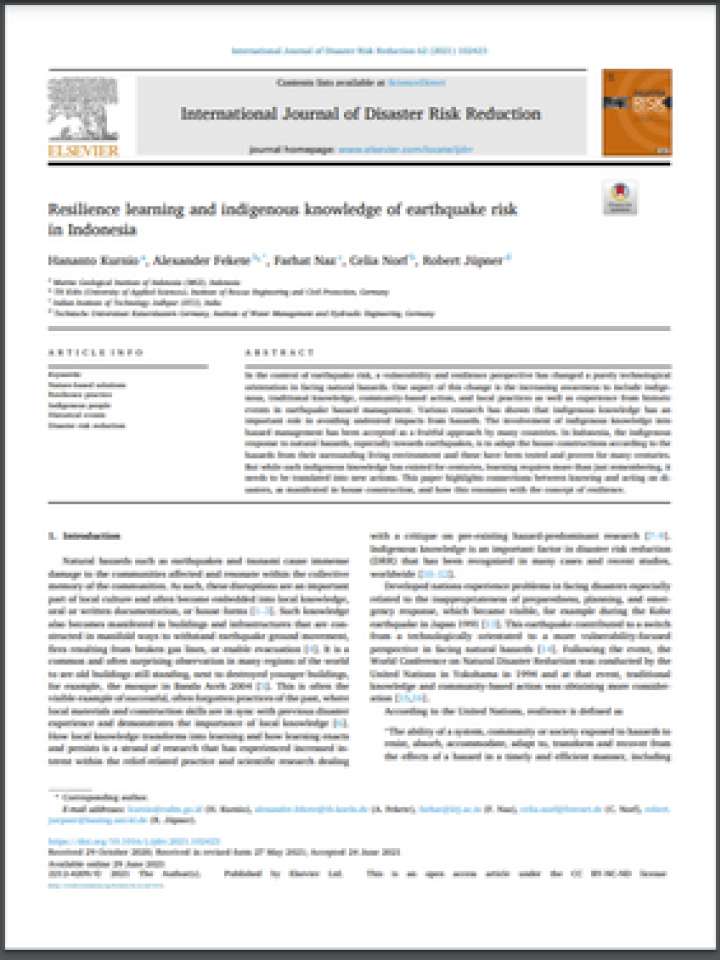Resilience learning and indigenous knowledge of earthquake risk in Indonesia
This paper highlights connections between knowing and acting on disasters, as manifested in house construction, and how this resonates with the concept of resilience. In the context of earthquake risk, a vulnerability and resilience perspective has changed a purely technological orientation in facing natural hazards. One aspect of this change is the increasing awareness to include indigenous, traditional knowledge, community-based action, and local practices as well as experience from historic events in earthquake hazard management. Various research has shown that indigenous knowledge has an important role in avoiding undesired impacts from hazards. The involvement of indigenous knowledge into hazard management has been accepted as a fruitful approach by many countries. In Indonesia, the indigenous response to natural hazards, especially towards earthquakes, is to adapt the house constructions according to the hazards from their surrounding living environment and these have been tested and proven for many centuries. But while such indigenous knowledge has existed for centuries, learning requires more than just remembering, it needs to be translated into new actions.
Indigenous knowledge prompts us to reconsider already existing knowledge, laymen knowledge, and old traditional knowledge, and common DRR strategies that are mostly based on so-called expert knowledge. This is in line with modern changes of the perspective of acknowledging not only established experts as purveyors of key information and decision-making but also many other actors and sources of knowing and acting. Moreover, under the resilience flag, awareness and acceptance of laymen knowledge have become more known in fields such as the health sector, where not only medical doctors are to be heard about changes in a patient’s health, but also nurses, family members, and other observers. This has prompted a change of perception in other fields as well.
Explore further
